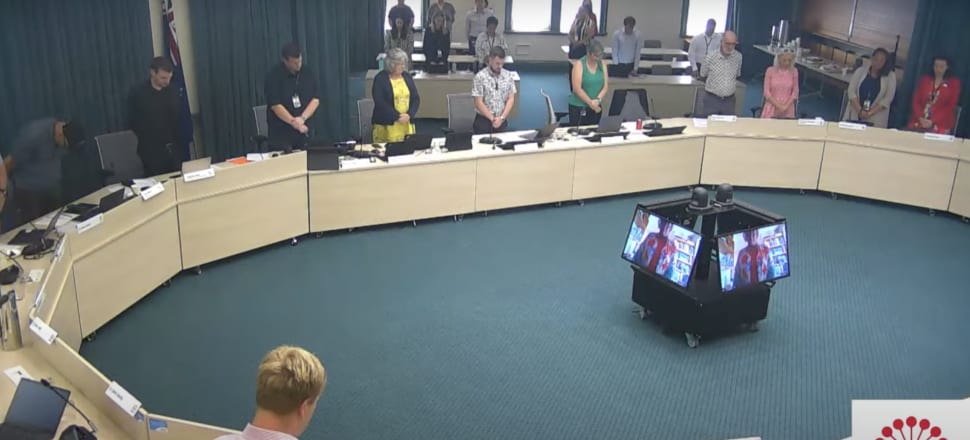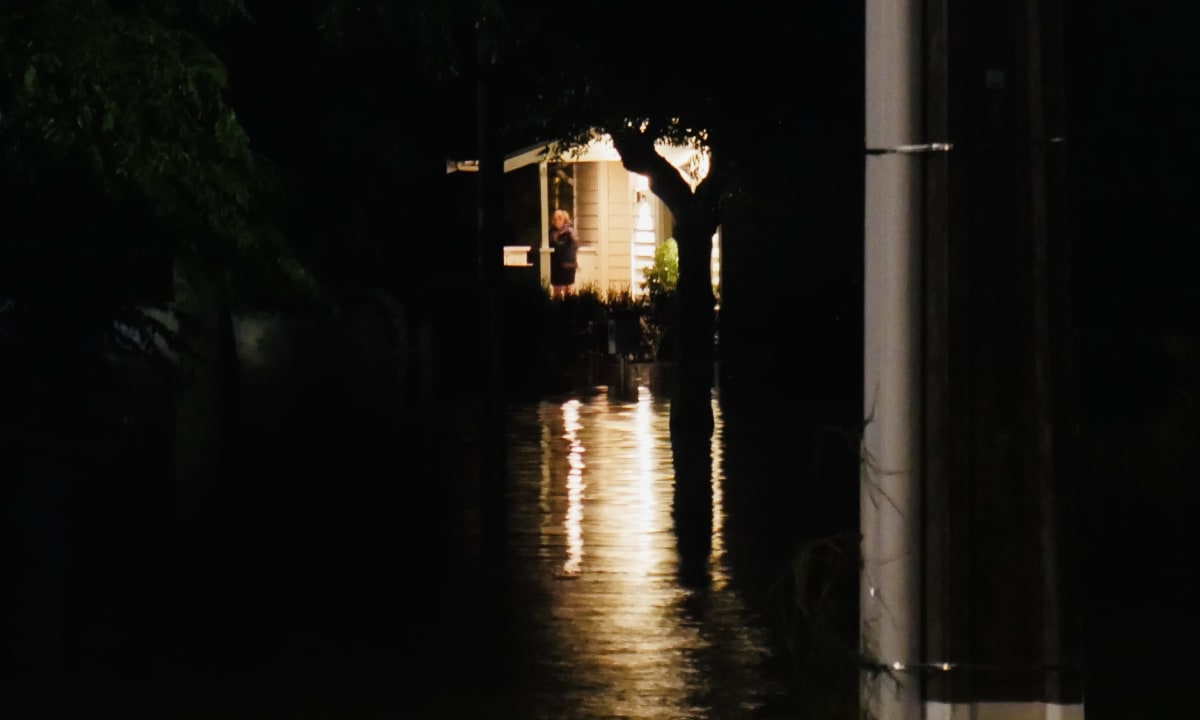
Councillors officially met for the first time since the rains fell on Thursday afternoon to lay out all of the options local government has to lean on
The first official meeting of Auckland’s councillors since the flood saw the city’s local politicians putting their heads together - in some cases butting them - to chart a plan forward for the disaster-struck city.
With the events of that rainy night a fortnight back are fresh in the minds of Aucklanders, the councillors acknowledged the heroism and pain they had witnessed across the city and were briefed on the next phase of recovery, which Mayor Wayne Brown has called “the big Auckland fix-up”.
READ MORE: * Stormwaters run deep: Councillors call for audit * Auckland scathing of minister's power in planning changes
Council staff have been asked to urgently start the long-term work needed to fund and mitigate future events, as well as understand the differential impact the rains had on different suburbs.
Discussion of the flood and its impacts on land use and plan changes was a last-minute addition to the agenda, giving the meeting of the Planning, Environment and Parks Committee an urgency it’s never had before.
That’s especially true given the warnings of Cyclone Gabrielle making ground on the upper North Island on Sunday and officials warning severe weather could be on the way again, before the city has even had time to fully dry out.
Auckland can’t catch a break right now - after two rainy long weekends in a row, it doesn’t look like this weekend is going to be any more peaceful, with the local state of emergency extended for another week.
Rachel Kelleher, deputy controller of Auckland Emergency Management, said Gabrielle could bring strong rain and heavy winds.
“Please take the time that we have now to pitch in and prepare yourself and your family for the impacts of what could be more severe weather,” she said.
Meanwhile, Brown said while the event could be more severe, with greater winds potentially leading to more power outages, the past two weeks have certainly prodded the council into being more prepared than last time.
“We’ll do our absolute best to prepare for this, but you can’t wish it away - you have to face it, and that's very difficult,” he said. “This time we do have the advantage of knowing it's coming.”
He said the floods have sharpened the ability of his office and the council to respond to disaster.
“Every lesson that could have been learnt has been learnt, and there is a review making sure that they stay learnt,” he said.
After being caught out calling the media drongoes in the week following the floods, Brown seems to have made a conscious effort to turn his public image as a grouch around.
As he left the Auckland Emergency Management press conference to get to the Town Hall he took a moment to thank the media for getting emergency information out to the public.
But once he got over to the council chambers, it was councillor Richard Hills’ turn to lead proceedings as chair of the Planning, Environment and Parks Committee.
Hills began the meeting with an acknowledgement of all that Aucklanders had lost - from the four people who died to the thousands of damaged homes.
The council stood in silence for a minute of reflection before councillors shared some of their own stories and views of how the committee should proceed.
"Probably the only good thing to come out of this disaster has been the best of our communities have come out," Hills said. “They’re all stories that we have.”
Hills recounted a group of surf life-savers who hit the waters and saved dozens of people, and older people who piggy-backed their peers out of floodwaters.
Meanwhile, Waitakere’s Shane Henderson talked about a man who pulled his tetraplegic neighbour out of a flooding house with a kayak.

As of Thursday morning, the numbers on the damage continued to climb.
Across the region, there were 278 red-stickered houses, 1675 yellow-stickered houses, and 85 council and community assets damaged, including 18 damaged playgrounds and 90 impacted boardwalks, bridges and walking trails.
“Many homes that have lost everything aren't included in those lists as they may still be liveable,” Hills said.
Meanwhile, there have been 178 slips recorded on public land. That number may increase by an order of magnitude if slips of private land are included.
It’s not an event that any of the sitting councillors have ever seen, with January standing as the wettest month since records began.
North Shore councillor Chris Darby cautioned against leaning on terms like unprecedented or phrases like ‘one in 200 years’ or ‘nothing we could do’.
“These descriptions are not appropriate: we may not have seen this before in Auckland but we have seen it and it was just a matter of time,” he said. “It's almost like you're creating an excuse for not having woken up to this risk ... NIWA told us about this likelihood more than a decade ago.”
Darby said the council had been paddling with the paddle on one side of the boat, with many dwellings in hazard zones such as flood plains or eroding coasts and cliffs.
More than 2000 dwelling units were given consent despite being in hazard zones in the past 12 months.
“I never realised that we were consenting so many buildings to be built in such places and then thousands of people to be put in those places - to live, but maybe not fully understand the place that they are living in.”
He also pointed out the names of Auckland locations, many of which provide clues as to what kind of conditions can be expected there.
“We have a place called Wairau and it was an absolute flood zone,” he said. “I only woke up recently to what that name means - the place of gathering waters. And did it not gather, deep and dangerous; and extremely costly. People have lost livelihoods and - I'm just waking up to that name: Wairau.”
Councillor John Watson detailed his own memories of the Wairau Valley when he was a Westlake schoolboy: “You knew it was a dangerous place when it started raining.”
But now the waters have come, the councillors have to agree on a central question: where to from here?
For the most part, the councillors supported council chief of strategy Megan Tyler’s promises to take an urgent look at how to plan and fund future flooding response, including potential changes to settings allowing those consents in hazard zones.
It’s work that’s going to eventually require some money to be moved around.
The mayor said costs of the flood response could be sourced in part from the lump sum relief fund gifted by central government.
“There are things like the bins on the berms,” he said. “You just have to do that and sort out the finances later on.”

The place where councillors tangled horns was the same place they usually do - intensification. The men and women around the council table weren’t able to agree on whether newly-intensified areas fared better or worse in the storm.
The mayor weighed in early on the issue, saying that in his visits to flood-affected communities, he’d personally noticed heritage areas sometimes came out drier.
“The heritage areas tended to not be so bad, as in the old days, when they were kind of a bit more aware of the dangers of cliffs and valleys,” he said. “But we've got a bit more brave or foolish - I’m not quite sure which.”
Hills countered by saying although it was just anecdotal evidence at this point, he’d observed newly-intensified communities faring better.
“In myself and Councillor Darby's community, the newly intensified areas actually fared better than they used to, although that was due to us putting in, and the government putting in, better infrastructure as well.”
However, Darby pointed out that without the data in hand, all reckons on which granular areas were worst-hit were just that: reckons.
Albert-Eden-Puketāpapa’s Christine Fletcher spoke about the need to keep decisions evidence-based.
“This is a critical time for Auckland where we are literally at a watershed, and I just hope that politics don't dominate what happens going forward,” she said.
It’s the beginning of a long road of tough decisions for both councillors and council staff, as Auckland comes to terms with its flood risk and finds a way to keep its head above the water.







